Ulysses, Bear, or Apple Notes? A Comparison of the Best Note-Taking, Writing, and Research Apps
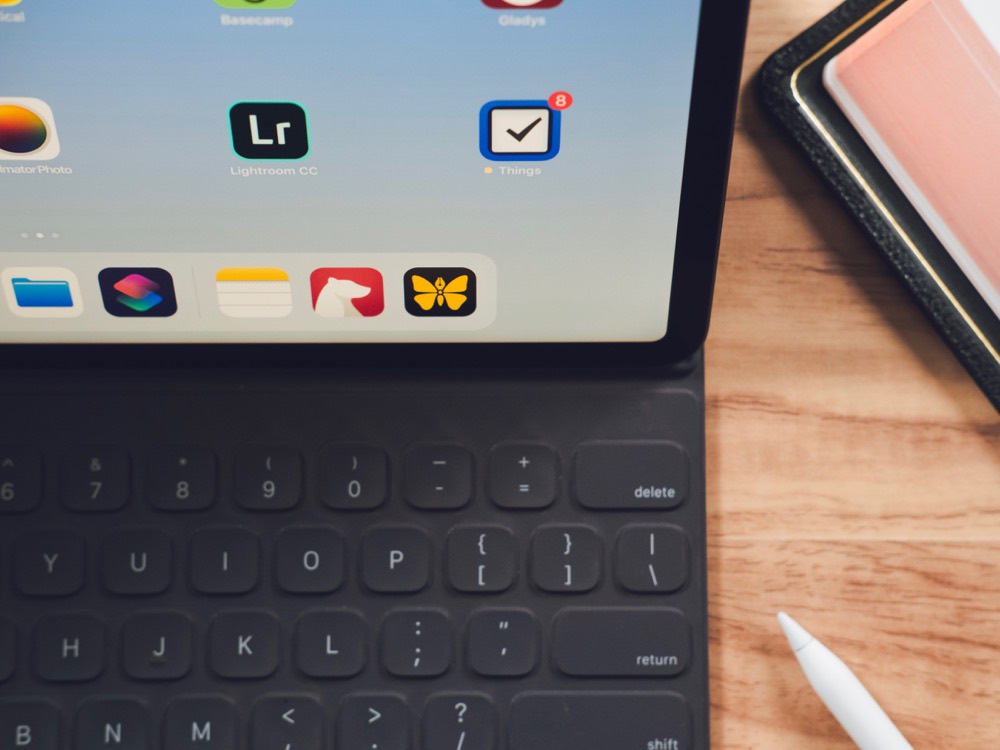
If you’re into note-taking and writing, then you are in a great spot — there are lots of great options available between the Mac, iPad, and iPhone. Thanks to the wealth of choice, it becomes that much easier to hone in on a best app for your specific needs.

We are asked pretty often which app is best for writing, which app is best for note-taking, and which app is best for research. Some people on The Sweet Setup team are able to use the same app for all of the above, while others use a combination of these apps to get their work done:
- Shawn Blanc uses Ulysses for research, for saving ideas, quotes, and other miscellany, for writing, and for publishing.
- Mike Schmitz uses Ulysses for writing, but has a variety of other apps at work before getting into Ulysses.
- Josh Ginter uses Ulysses strictly for writing and for publishing, while long-term research is handled in Keep It, and journaling is handled in Day One.
There’s no right or wrong way to use any of the apps listed above, but the most common apps we use are Ulysses, Bear, and Apple Notes. We’re going to take a look at how each of these apps differ, how they’re alike, and see where each shine.
Overview Comparison of Ulysses, Bear, and Apple Notes
|**Feature**|**Ulysses**|**Bear**|**Apple Notes**|
|Sync|✅|✅|✅|
|Tags|✅|✅|❌|
|Saved Searches|✅|❌|❌|
|Collaborative Notes|❌|❌|✅|
|Markdown|✅|✅|❌|
|Advanced Export Options|✅|✅|❌|
|Advanced Keyboard Support|✅|✅|❌|
|Import Documents|✅|✅|✅|
|Document Attachments|✅|✅|✅|
|Mac and iOS Apps|✅|✅|✅|
|Shortcuts Integration|✅|✅|✅|
|Apple Pencil Support|❌|✅|✅|
|Price (Monthly)|$5.99|$1.49|Free|
|Price (Annual)|$49.99|$14.99|Free|
→ Read our in-depth review of Ulysses.
→ Read our in-depth review of Bear.
Now, let’s dive into the specifics of each app’s strengths and weaknesses…
Ulysses

Ulysses is our writing tool of choice. We love it so much we have a whole course devoted to getting the most out of Ulysses. When it comes to organizing your writing projects, Ulysses is the best.
My Writing Workflow
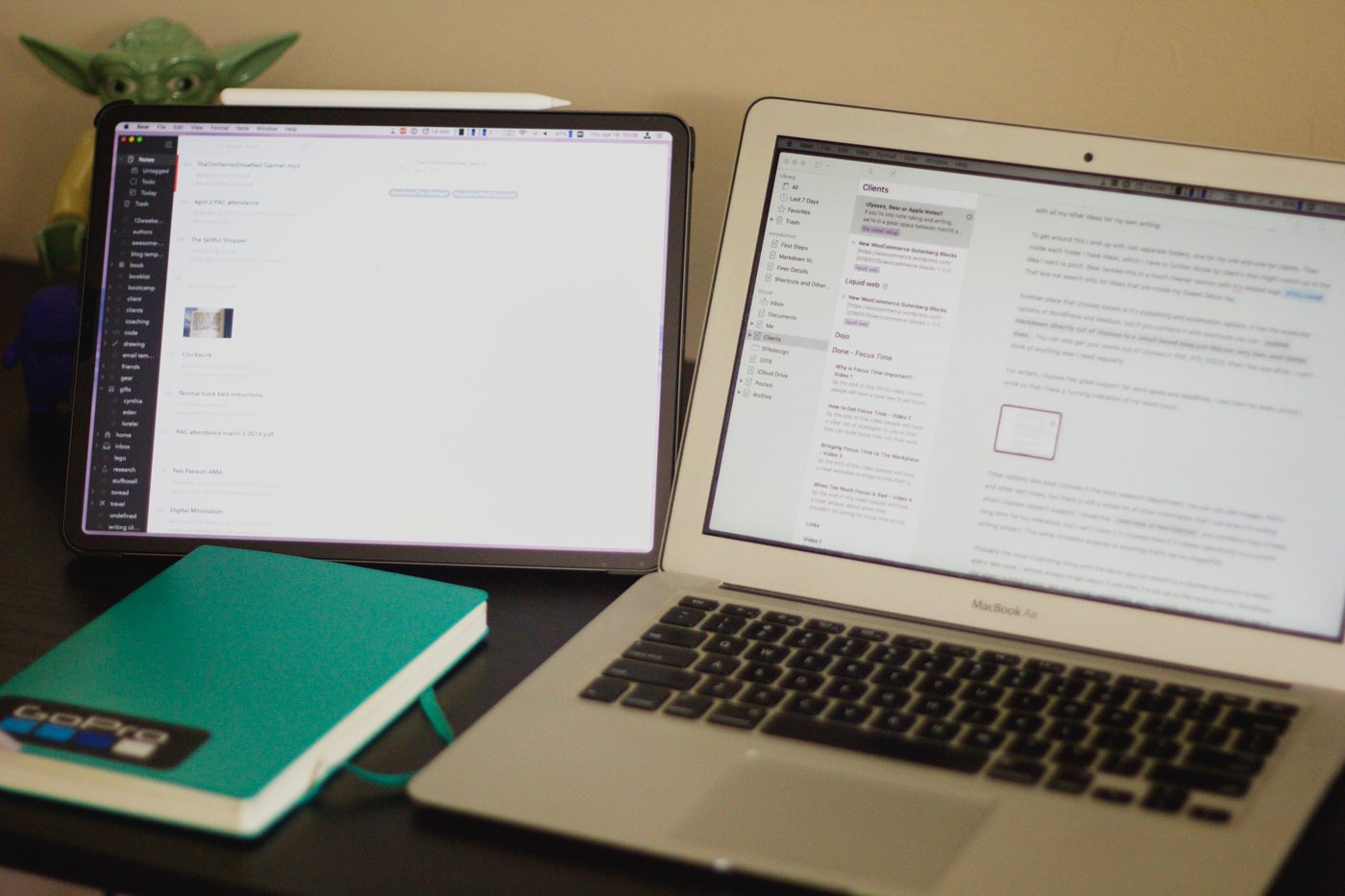
I use Ulysses along with my three-bucket writing system. My daily workflow is pretty simple:
- Take one idea and move it to an outlined piece.
- Take one outlined piece and write it out, moving it into the written bucket.
- Take one written piece and edit the piece so it’s ready to publish.
This is very similar to the writing system Jeff Goins recommends, and it’s all easily doable in Ulysses because of the great keyword support along with groups and smart smart to help organize the buckets any way you see fit.
Keywords and Groups in Ulysses
Ulysses makes great use of keywords, with its keyword manager and color-coding. However, it doesn’t allow you to do much in the way of nesting keywords like Bear does. This becomes most problematic for me when I’m searching for a document. I may know that it’s an idea for The Sweet Setup, but since the keyword is idea, it shows up with all my other ideas for my own writing.
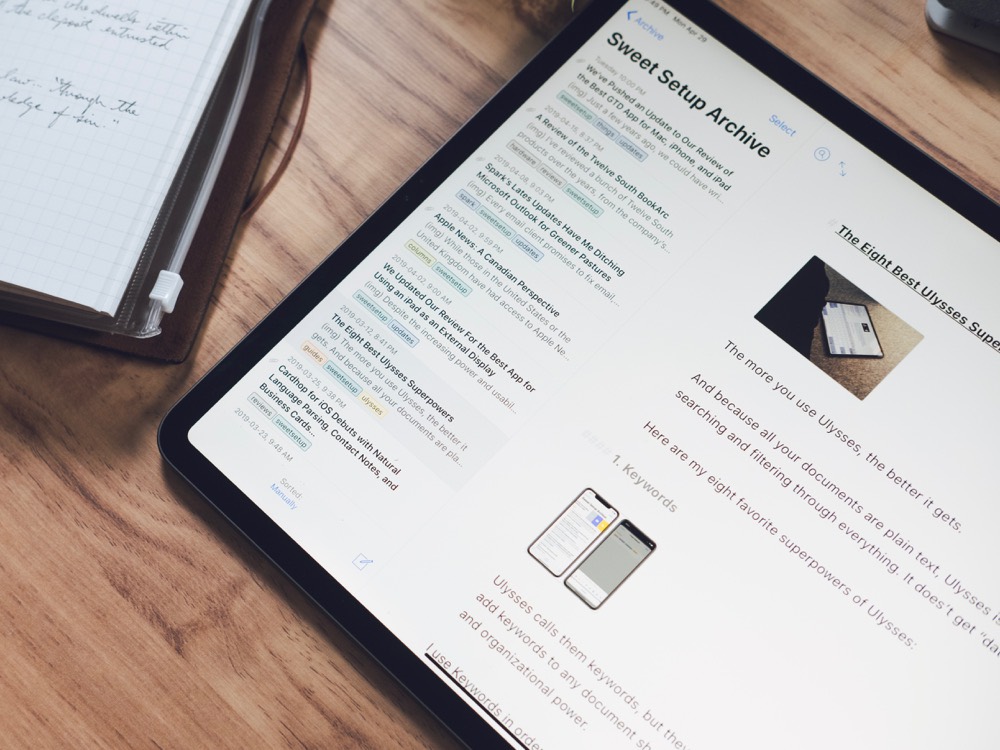
To get around this, I end up with two separate folders: one for my site and one for clients. Inside each folder I have ideas, which I have to further divide by clients that might match up to the idea I want to pitch.
You can quickly see I have to go through a lot of extra work to nest the “idea” keyword into different groups.
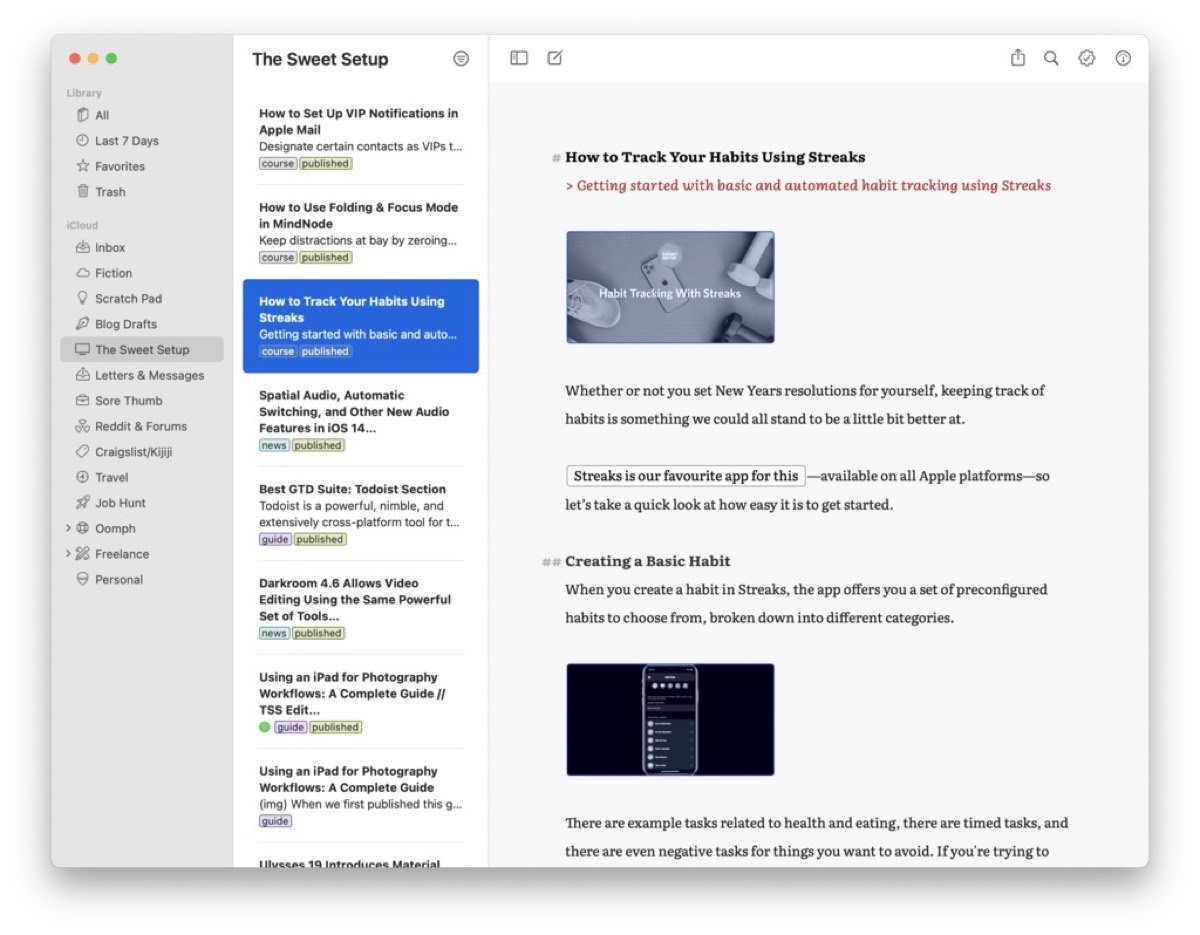
Bear tackles this in a much cleaner fashion with nested tags #TSS/idea#. This method lets me search only for ideas that are inside the TSS tag.
Ulysses utilizes keywords and groups that are ideal for writing and moving sheets from one bucket to the next. However, for deeper levels of organization and research, I prefer Bear.
Using Ulysses for Publishing, Automation, and Export
Ulysses truly shines in its publishing and automation options, offering publishing options like WordPress and Medium, but you can also combine it with Shortcuts to publish Markdown directly out of Ulysses to a Jekyll-based blog just like our very own Josh Ginter does.
You can also export your words in PDF, RTF, DOCX, Plain Text, ePub, and a number of other text formats. You can also publish directly to WordPress and Medium. The only option I’ve ever wanted in addition to what is provided is a native Kindle export when I publish books on Amazon.
Ulysses’ Writing Goals and Deadlines
For writers, Ulysses has great support for word goals and deadlines. I use them for every article I write so that I have a running indication of my word count.
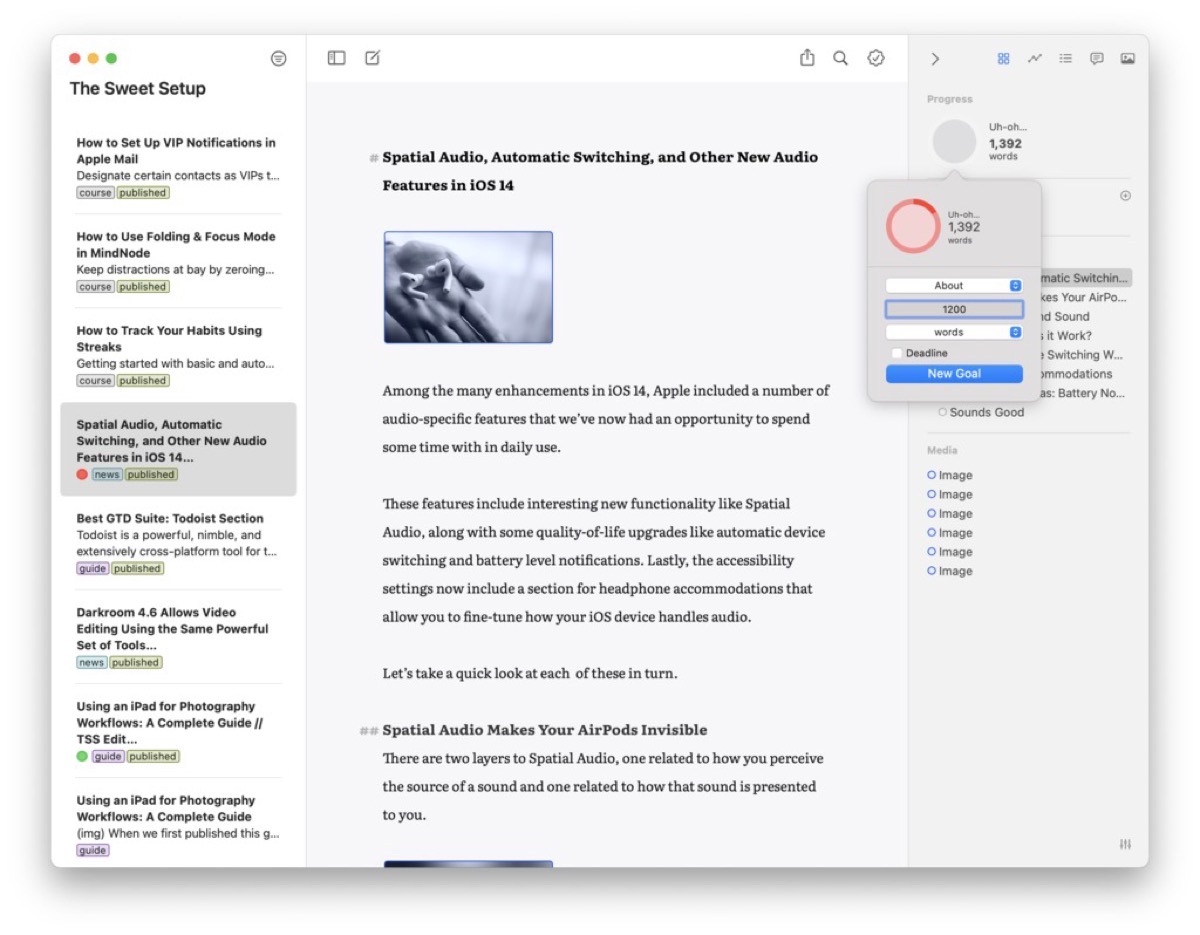
Where Ulysses Falls Short
As mentioned above, other app options such as Bear or Keep It offer more than Ulysses in the pure research department.
Ulysses allows you to add images, PDFs, and other text notes, but there a lot of other information and media types that I use when I’m writing, which Ulysses doesn’t support. I loved this interview with Neil Gaiman and wanted a copy to keep long term for my reference, but I can’t store it in Ulysses even if it relates specifically to a current writing project. This same limitation extends to anything that’s not an image or PDF.
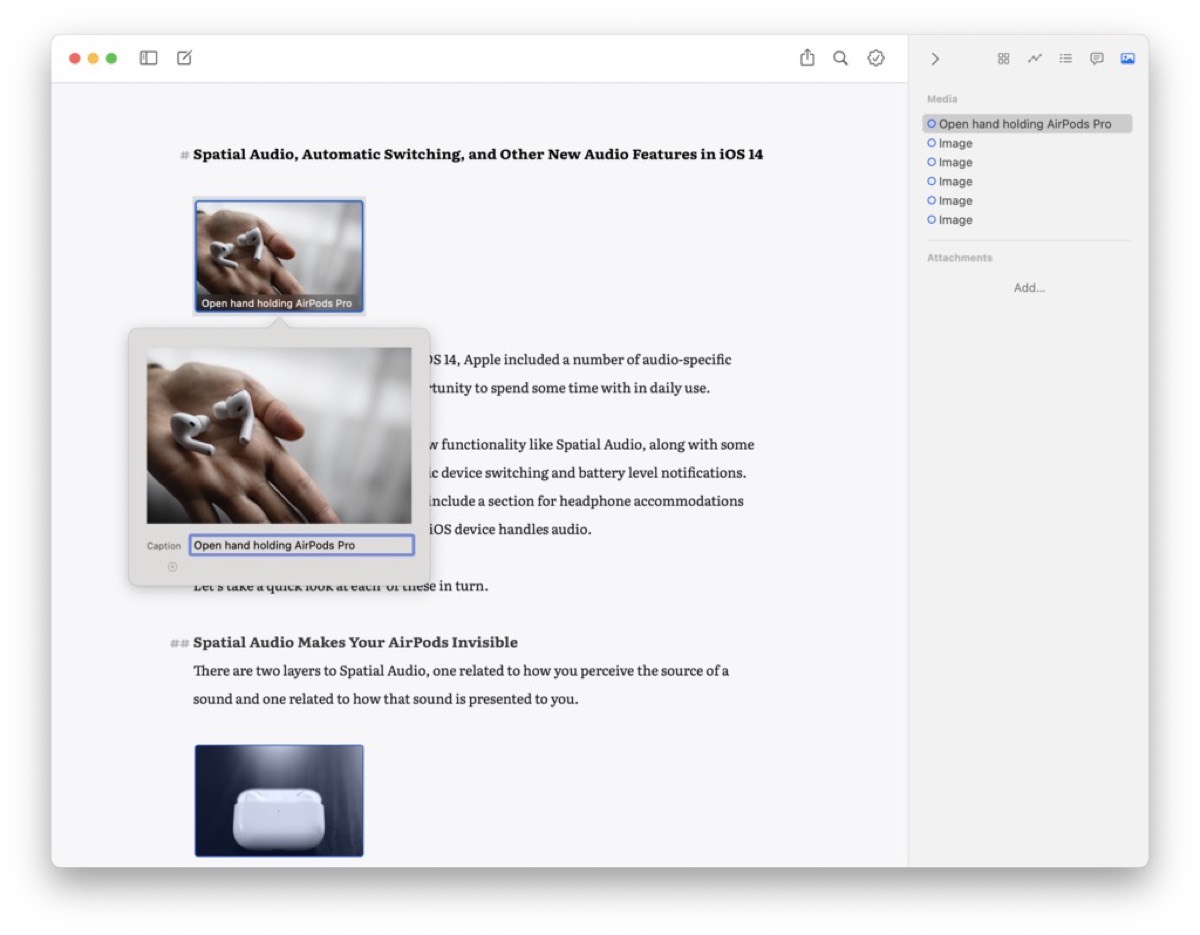
Probably the most frustrating things I experience with the items you can attach to a Ulysses document is when I add a text note. I almost always forget about text notes, and then they end up as the excerpt in my WordPress article when I publish a post. Not once have I wanted this, and I probably have to go back and clean it up every other week.
One of the final areas that Ulysses simply doesn’t cover is advanced support for the Apple Pencil as an input device. Ulysses has default Scribble capabilities included with iOS 13, but there’s nothing beyond default Scribble support. I can’t fault them for not doing handwriting support, since they’d also need to translate that into characters for output to your site. I’m not sure I even want to fault the application for not allowing you to create a quick sketch without leaving Ulysses, but it’s always nice to do everything in a single app.
Side note regarding Ulysses: If you want to level up your usage of Ulysses — as well as get some best practices for how to organize your notes and your writing, then you would love in our in-depth training course, Learn Ulysses.
Bear

If I pick up where I left off with Ulysses, Bear is a great research tool. That same Neil Gaiman interview can be added to Bear and then I can tag it with multiple author names and even take notes below the file so I have a quick summary of the audio without needing to listen to it.
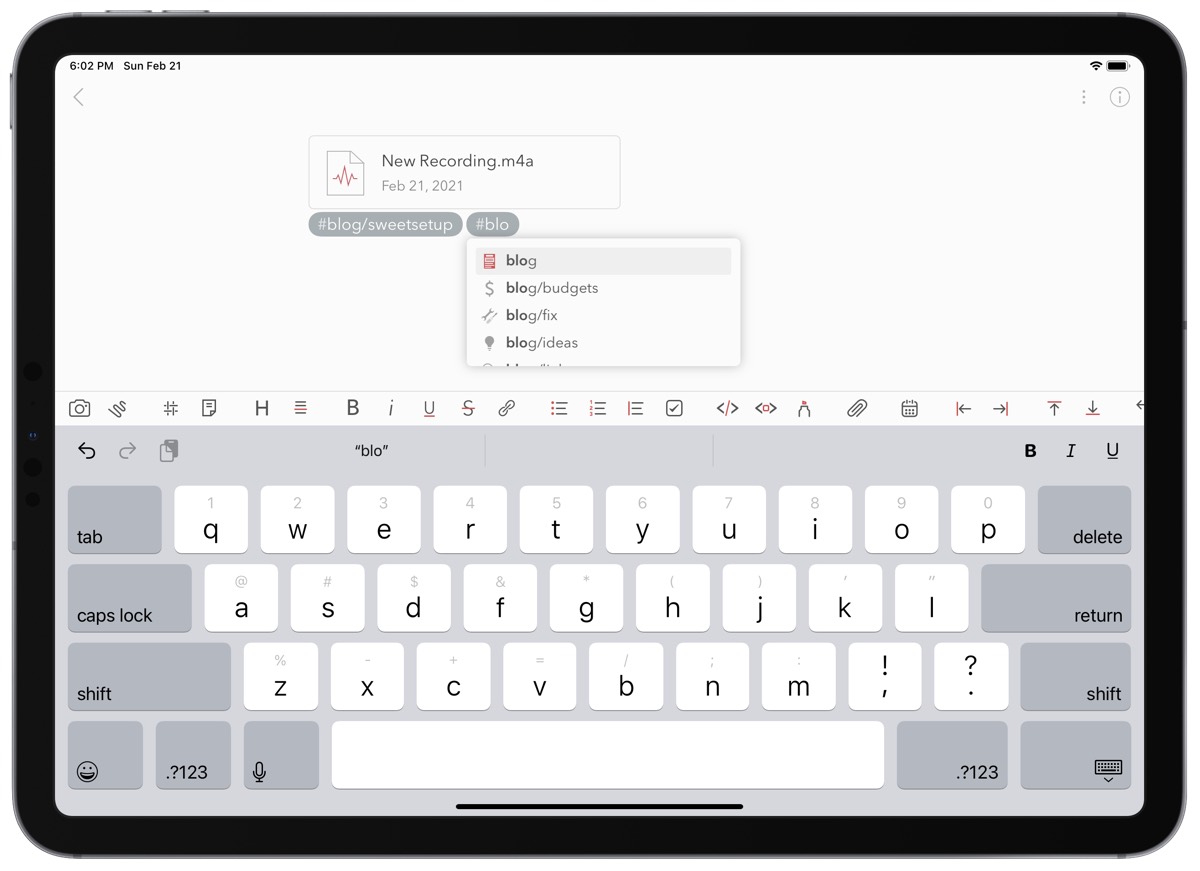
Tags, Organization, and Media Types in Bear
I’ve already mentioned the nested tags that Bear lets you use, but I have to admit that I didn’t like how Bear deals with tags at all at first. Something about the method rubbed me the wrong way initially, but I’m totally converted. From nested tags, to being able to have multi-word tags by wrapping a tag in the # symbol (like #tss ideas#), Bear handles tags well.
Bear also handles pretty much any file type you want. From DOCX to PDF to video files, you can drop them all into Bear to save for later. Even cooler is the way that Bear lets you append or prepend text to a note. I’ll use this when I open Bear to listen or watch something that needs to be cataloged while I use Drafts in split view mode.
As I listen, I’ll use Drafts to take my notes and then share from Drafts to Bear and append the text to the note that has the audio or video file already attached. This simply can’t be done with Ulysses because it doesn’t allow the addition of audio or video files, nor does it allow you to easily append or prepend text to an existing note.
Compared to Ulysses, Bear takes a step forward in support for the Apple Pencil by allowing you to add sketches to your notes. This can be helpful if you want to copy out a quick diagram in a meeting or conference. Instead of a fuzzy picture, you can capture exactly what you want and then add any other notes around that sketch to enhance your understanding. This feature alone makes Bear stand above Ulysses if you’re looking to take notes during a presentation or workshop.
Writing, Exporting, and Publishing with Bear
While Bear sells itself primarily as a note-taking app, it’s also entirely possible to write with Bear like you would with Ulysses or any other text editor or Markdown app.
Bear currently uses its own version of Markdown to format text, but some of the keyboard shortcuts and syntax differ ever so slightly from original Markdown syntax. The same can be said about Ulysses, but we feel Ulysses does a better job of hiding syntax, bringing out only the thoughts and ideas in your written text. Bear does a good job of maintaining simplicity when writing, but we prefer how Ulysses handles the writing process.
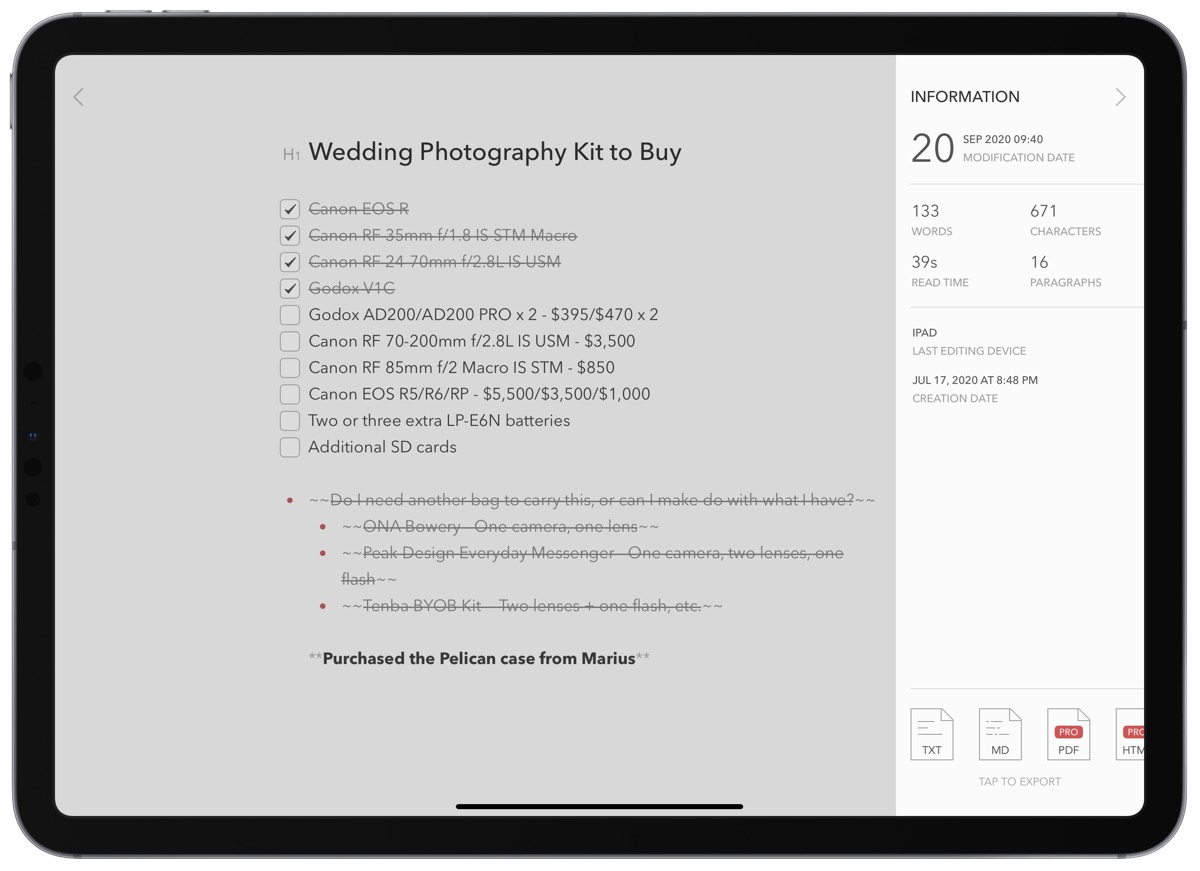
While Bear has solid export features for your notes, it isn’t quite up to the level that Ulysses sets. Using Bear, you can export into many file types, like:
- Text
- Markdown
- HTML
- RTF
- DOCX
- and JPG
Unfortunately, unless you’re going to build your own integration with Shortcuts, you won’t be publishing directly out of Bear to WordPress or Medium.
Some Other Areas Where Bear Falls Short
Saved searches is another place that Bear could take a note from the Smart Groups that Ulysses offers. Where Ulysses allows you to have many different parameters factor into your search via a graphical interface, Bear provides you with a number of advanced search operators. You could accomplish many of the same searches in Bear that you can get in Ulysses, but none of them are going to be saved. Each time you want to find the same collection of documents, you’ll have to build the same complex search again.
The final area that Bear doesn’t stand up to some of the competition is the ability to OCR a PDF document. If that’s something you need, you should look at something like DevonThink or Evernote. Because Bear doesn’t support OCR for documents, you must ensure that anything you may search for about a document is written out in text inside the note.
Apple Notes

For non-power users, Apple Notes is a great option. Despite me making suggestions to my wife about other note-taking apps, she is quite happy with Apple Notes, and I also love it for some purposes.
Shared Notes in Apple Notes
The biggest thing that I use Apple Notes for is dealing with shared notes. Neither Bear nor Ulysses support shared documents, so this makes Apple Notes an essential app, regardless of your other writing, researching, or note-taking workflows.
When my wife and I have a sick kid, we like to pass information back and forth. We have a shared note for each family member and when any medication is given or temperature taken, we add it to their note with the date and time on it.
This way it doesn’t matter which parent ends up going to the doctor with the sick kid, we all have the same basic information about what was going on. Even if I worked all day, I can tell the doctor how much medication was given, how many trips to the toilet were needed, and what happened during them. (Being a parent allows you to talk about these kinds of things with a perfectly straight face.)
Making Lists in Apple Notes
Outside of our shared notes, I’ll use Apple Notes when I need to make a quick checklist for errands. This might be a grocery trip or a trip to the building supply store for some nails and screws. Dropping this checklist into Apple Notes is the fastest way I’ve found to get a list going that I can delete later without really thinking about what I need to do. You can create tappable checklists like this in Bear, but Apple Notes’ implementation is smoother, more efficient, and more user-friendly.
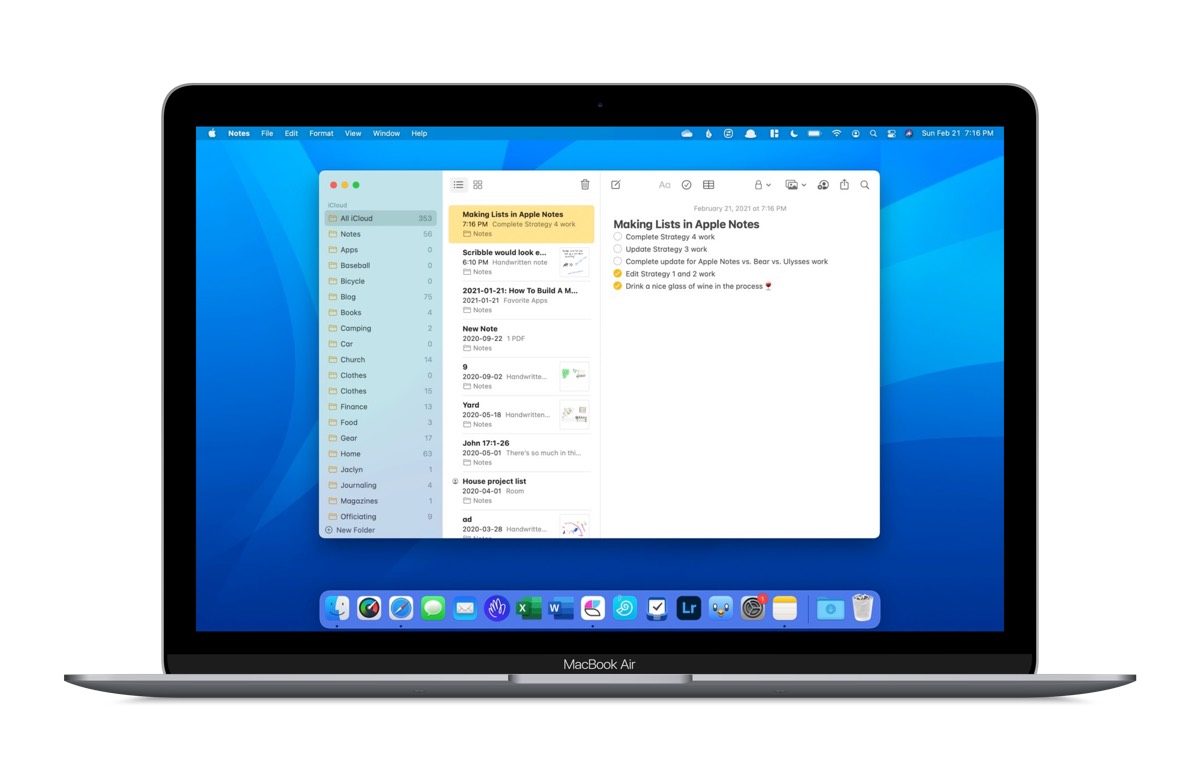
Apple Pencil Support in Apple Notes
Out of all the apps today, Apple Notes has the best support for the Apple Pencil by bringing you the full markup pallette that is native to iOS. With a simple tap you can bring up your sketching window and take handwritten notes or add a sketch as you see fit.
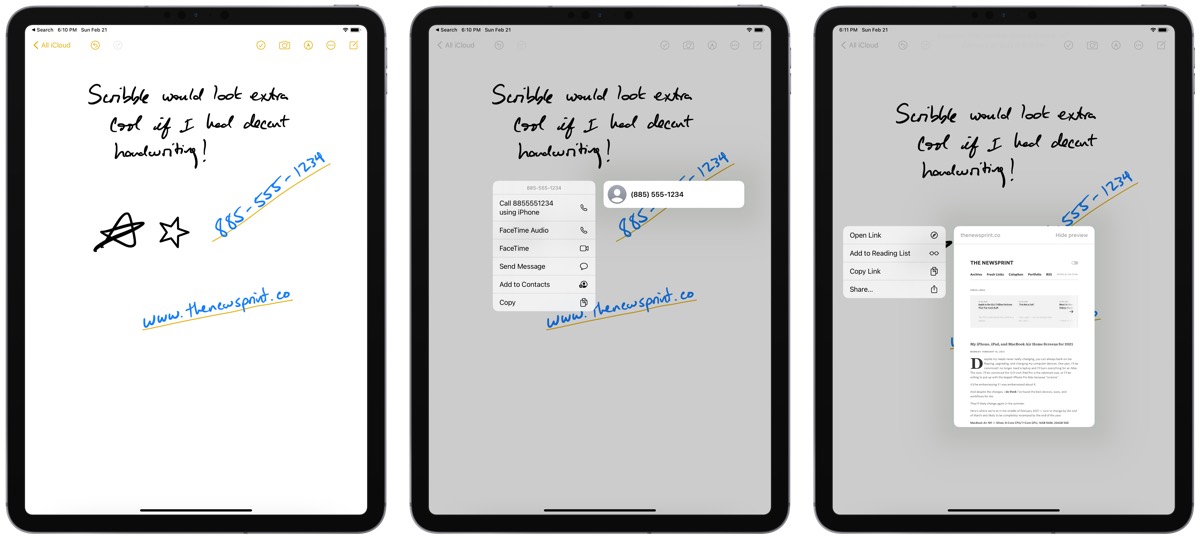
iOS 13 introduced Scribble support, allowing you to write text with an Apple Pencil anywhere on the iPad and iOS 13 will convert your handwritten text to typed text. Inside Apple Notes, Scribble is put into overcharge — Scribble will convert your handwritten text into searchable text or even allow you to tap on the handwritten text to start a phone call, open a URL, or send someone an email. This is handwritten notes on overdrive and you can really only find this type of functionality inside Apple Notes.
Where Apple Notes Falls Short
Apple Notes has the least amount of export options if you need to get your notes out. Really, there are no export options built into Notes outside of what comes in your Share Sheet. You could likely build some fairly interesting stuff if you integrate with Shortcuts, but both Ulysses and Bear have so much built in already. If you need to get your text out in multiple ways, then Notes is not a good option.
Another thing that Notes doesn’t have is any sort of tagging. You can create different folders inside Notes to categorize your notes, but those folders are the only available option for organization. This lack of organization is compounded by the fact that Notes has only the most basic search functionality.
You can’t search by nested tags like Bear, and you can’t have multiple parameters that build a search like Ulysses. All Notes offers is a basic text search that you can’t save for later.
Ulysses and Bear allow you to attach documents to a file from within the app itself, whereas you have to send a file into Apple Notes if you want to attach it. You can import some types of files to turn them into a native Notes document. And while you can attach an MP3 or a PDF to a note for later reference, it has to be sent into the app. If you are already in the Notes app and you want to add an attachment, you can only add document scans, photos, videos, or sketches that you take right there.
To add a PDF or MP3 requires either a Drag & Drop action, or to “share” the file to Notes from its native location, rather than a direct file addition through the default “+” menu within the Notes app.
Features Shared by Ulysses, Bear, and Apple Notes
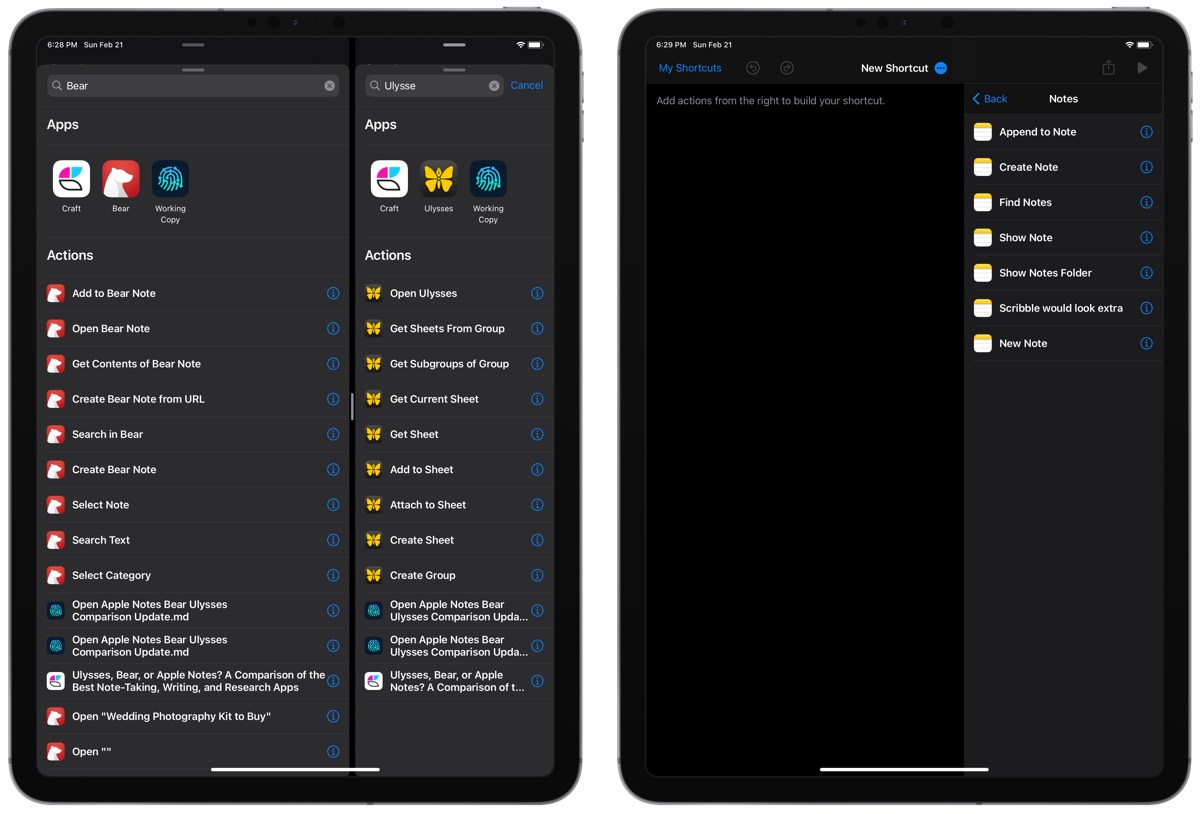
Despite all the differences between functionality and perks, there are also several features that these three tools share in common. Possibly the most important feature for any app in 2021 is a strong synchronization engine. In this case, all three of these apps excel. Making a change on one device appears on other devices in milliseconds, which is something you really come to appreciate after dealing with apps that have not-so-great sync services.
Ulysses and Bear both support Markdown, but Apple Notes does not. At least you won’t get any native formatting out of Apple Notes when you type text with Markdown syntax like you do with Bear and Ulysses. In many ways, we’ve been spoiled by our text editors that support Markdown formatting, but I would never want to go back to plain text Markdown.
Finally, each app also integrates with Shortcuts, though Ulysses and Bear have more direct integrations than Apple Notes. This is an area that we would love to see Apple improve on, considering it has the first-party app advantage. The innovation and creativity displayed by Ulysses and Bear in this area sets a great example and high bar that other app developers (including Apple) should strive to achieve.
A New App to Consider: Craft

Since we first published this comparative article a few years ago, there’ve been a number of new app options to consider for writing, taking notes, and storing long-term research. Keep It has continued to evolve, DEVONThink now has a usable iOS app, Roam Research and Notion have launched to much acclaim and have extensive features for research and data storage, and apps like Noto and Spaces have introduced new ways to store notes on the Mac, iPhone, and iPad.
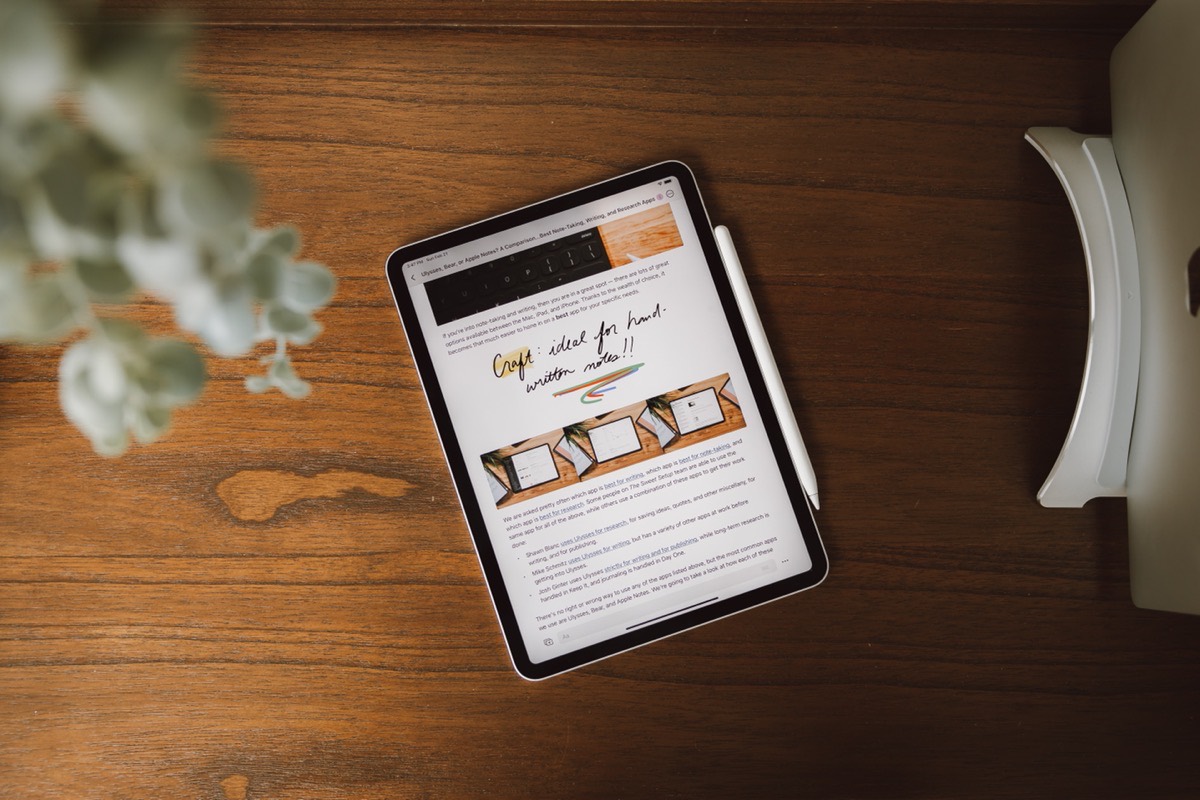
But perhaps the most applicable to this comparative discussion is Craft, a new option for storing notes and research, writing and publishing, collaborating with colleagues, and creating database-like organizational systems for all your ideas, notes, and writings. When compared directly to Apple Notes, Bear, and Ulysses, Craft is likely able to transcend them all as a one-app-fits-all workflow. But there are some hiccups along the way.
Organization and Pages in Craft
Craft uses a block-based organizational system, much like Notion on the web. Each paragraph, image, sketch, video, or PDF file is treated as block that can be moved around your document or be back-linked to from any other document. This approach allows you to use both Markdown blocks and rich text blocks within the same document, which has both pros and cons.
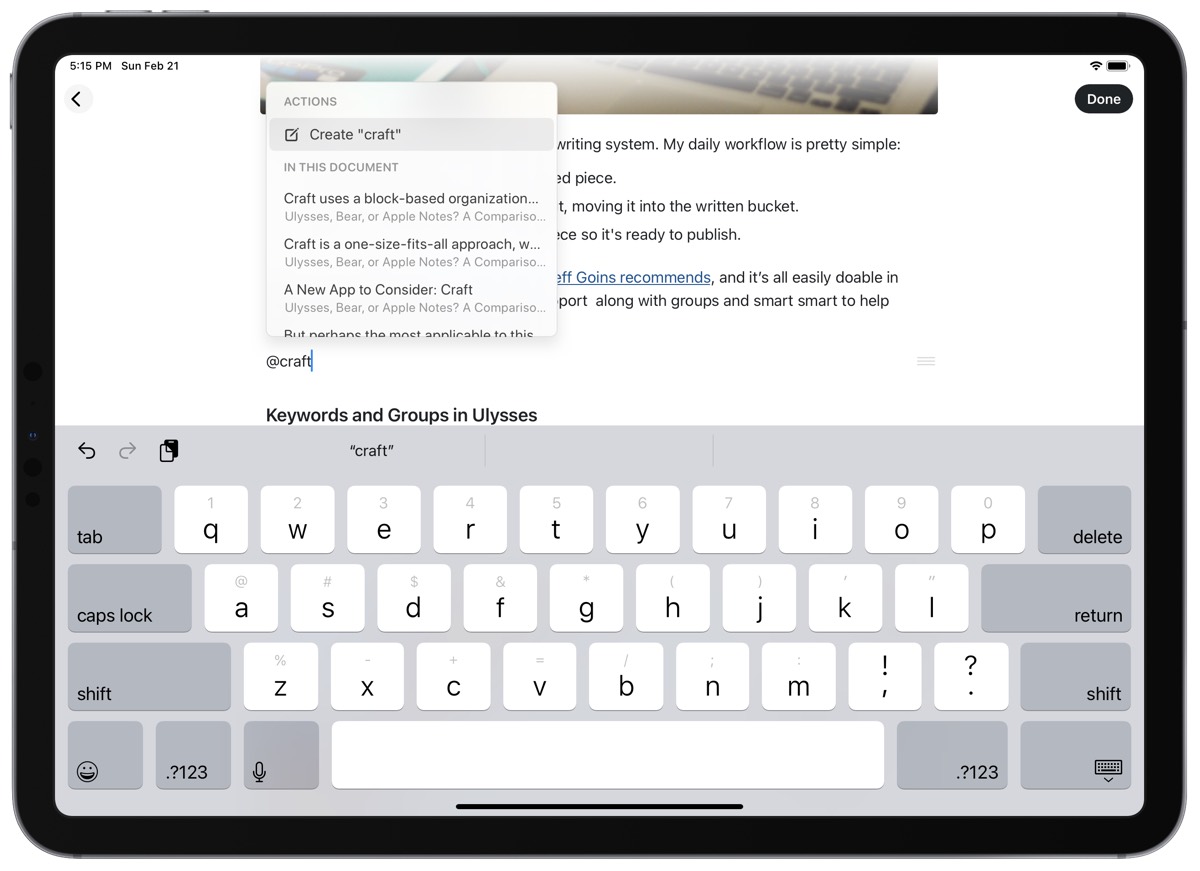
As mentioned, any block can be mentioned from any other document across Craft, allowing you to quickly link different ideas and insert blocks from other documents into your current document. By simply typing an “@” symbol, you can search for any block, and the inserted block is tappable/clickable link for quickly jumping to that specific block. This entire workflow is a lot like Roam Research and can save you lots of time when researching and exploring broad topics.
You can also insert nicely-styled pages inside any Craft document, much like a block insert. The inserted page link looks fantastic and allows you to create structured wiki-like documents. And with the built-in collaborative features, you can easily share these wiki-like documents with others — who don’t need to sign up to Craft to view the document or comment at all!
If Apple Notes has the least extensive form of organizational folder structure and Bear the easiest to use tags structure system, it’s likely Craft would be considered to have the most complicated organizational system. However, if harnessed, Craft’s organizational features likely trump all the other compared apps here and will meet the needs of a more extensive user.
Writing and Sharing with Craft
The block-based approach Craft has adopted makes writing inside Craft a little different than writing in an app like Ulysses or Bear.
Each block, by default, is a rich text block — keyboard shortcuts like CMD + B or CMD + I work to bold or italicize font and the formatting is shown inline with the rest of your text. If you want to write in Markdown, you can also do that — simply use standard Markdown syntax to format your text and Craft will showcase your formatting inline.

I discussed Craft’s collaborative features above — you can share any Craft document with other individuals who can comment on your work, all without having a Craft account. You can also collaborate directly with other Craft users by creating a shared workspace. All documents inside that shared workspace can be seen by everyone in the workspace and all collaborative updates are handled in a simple window in the top right corner. Having these collaborative features puts Craft up there with Apple Notes on the collaborative side, even if you have to have a Craft account to directly edit shared documents.
Finally, Craft has numerous export options. You can export your entire document to Word, PDF, Markdown, or Textbundle, or you can export individual blocks directly to apps like Ulysses, Bear, DEVONThink, iA Writer, Day One, NotePlan 3, or Drafts. If you want to export your entire document to these individual apps, you have to make sure you select all blocks beforehand — by default, the export to those apps only exports the current block in use.
Being a jack-of-all-trades writing app like Craft isn’t easy, but there is an extensive list of handy writing features here for a wide variety of users. Ulysses may be the ideal place to write a book, but Craft is quickly sneaking up on it as the best place to combine writing and research in one place.
Apple Pencil Support in Craft
Perhaps our favorite part about Craft is its ability to handle all types of media in one document. You can add code blocks, images, videos, PDFs, scans, formulas, and more all into one document and have all those media types show inline.
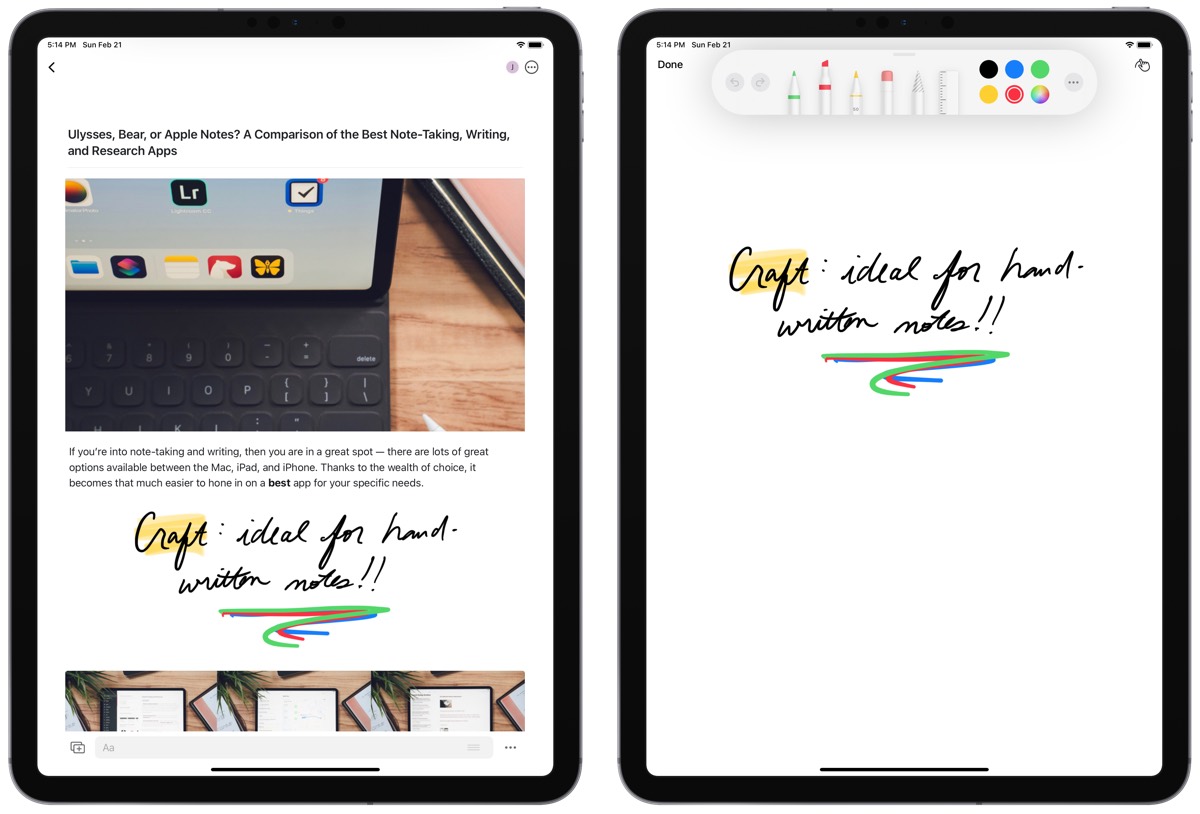
My favorite additional block is the sketch block. Craft provides the default Apple Pencil window to create a sketch block and you can handwrite to your heart’s content inside the window. Once you’re done, the saved sketch block rests inline with the rest of your text and is nicely formatted to ensure nothing is janky, there are no unneeded white spaces, and more. The sketch itself isn’t searchable or tappable like sketches are inside Apple Notes, but having the ability to house sketches alongside your written work and typed research is a killer feature for students, researchers, and other knowledge workers.
Areas Where Craft Falls Short
The single area where Craft may fall short for those looking to combine their writing, note-taking, and research workflows into one app is the Craft’s current limitation on storage space. A pro subscription nets you 10GB of data storage space, which is lots for most text-based forms of storage. However, if you accumulate PDFs, videos, and images over time, there’s a chance the 10GB storage capacity limit will be a hindrance to your work.
Craft is a one-size-fits-all approach, which means it’s not the best writing app available, it’s not the best note-taking app available, and it’s not the best long-term research app available. If you want the best of each category, Ulysses, Bear, and Keep It or DEVONThink are likely to better suit your needs. If you need more advanced Apple Pencil support, Craft likely falls short to Apple Notes as well — there’s nothing quite like being able to make a phone call by tapping on your handwritten note.
Which Should You Choose? Ulysses, Bear, or Apple Notes? Or Craft?
Which app should you choose? As with many things, the answer is: “it depends.” (We also wouldn’t blame you if you decided to use all three of these great apps.)
Pick Ulysses if… you’re looking mostly for writing app. Especially if you want to then publish your writing — Ulysses has the smoothest integration with WordPress as well as the widest array of export options — PDF; ePub — with specific features that writers will want, like a word count goal, and deadlines for projects.
Pick Bear if… you’re looking to store a bunch of notes and files for later reference. Because of its wide support for different file types as attachments, Bear can be quite versatile. If you’re thoughtful about your tags, then you can often find the exact file you need with ease (and an advanced search).
Pick Apple Notes if… you need shared notes and lists (as Apple Notes is the only option for this amongst these three apps. As I said, for users with light note-taking needs, then Notes is fast simple and comes already installed on your device. This makes it an ideal option for non-power users.
And finally, pick Craft if… you want a great writing app, a great note-taking app, a great long-term research app, and a great collaboration app, but aren’t concerned about having the very best of any of these categories. Craft is a new and recent player in this game and may end up being a great one-app-fits-all approach for many writers and note-takers.
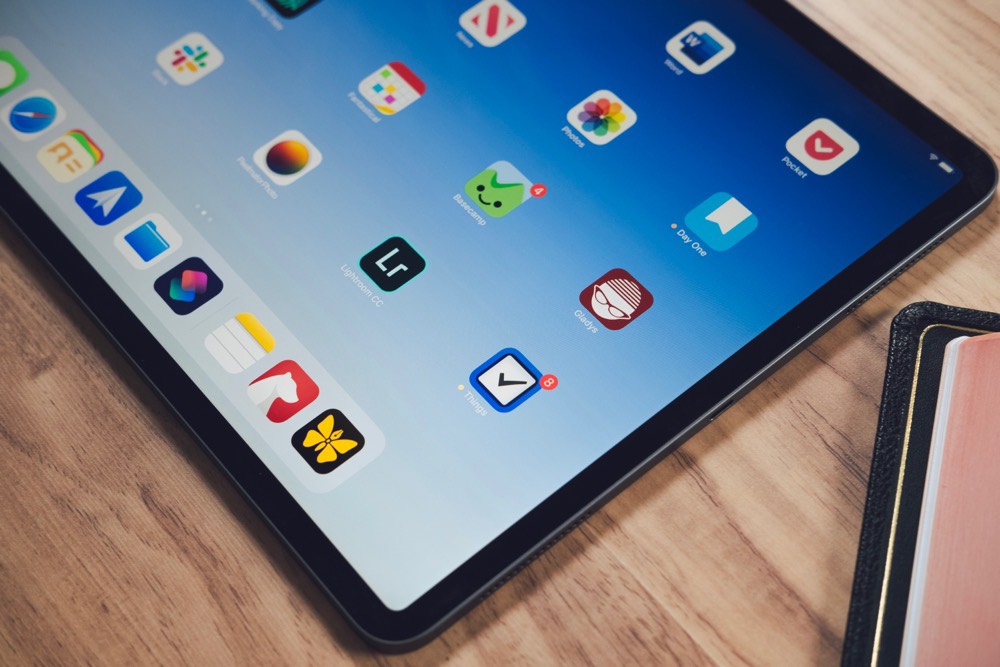
It’s never a simple task to compare three (or four) applications that all share similar functionality and take different approaches to solving UX and usability challenges. This certainly puts the onus of choice on the user, but we are incredibly lucky to have so many excellent choices available. And, as with all software, things are constantly evolving and improving, which makes us excited for the future and to see what lies around the next release bend.
If you want to level up your usage of Ulysses — as well as get some best practices for how to organize your notes and your writing, then check out our in-depth training course, Learn Ulysses.
Stop losing your ideas and notes to multiple apps…
An online course to help you save time, organize your notes, and master the best writing app for Mac and iOS: Ulysses.

